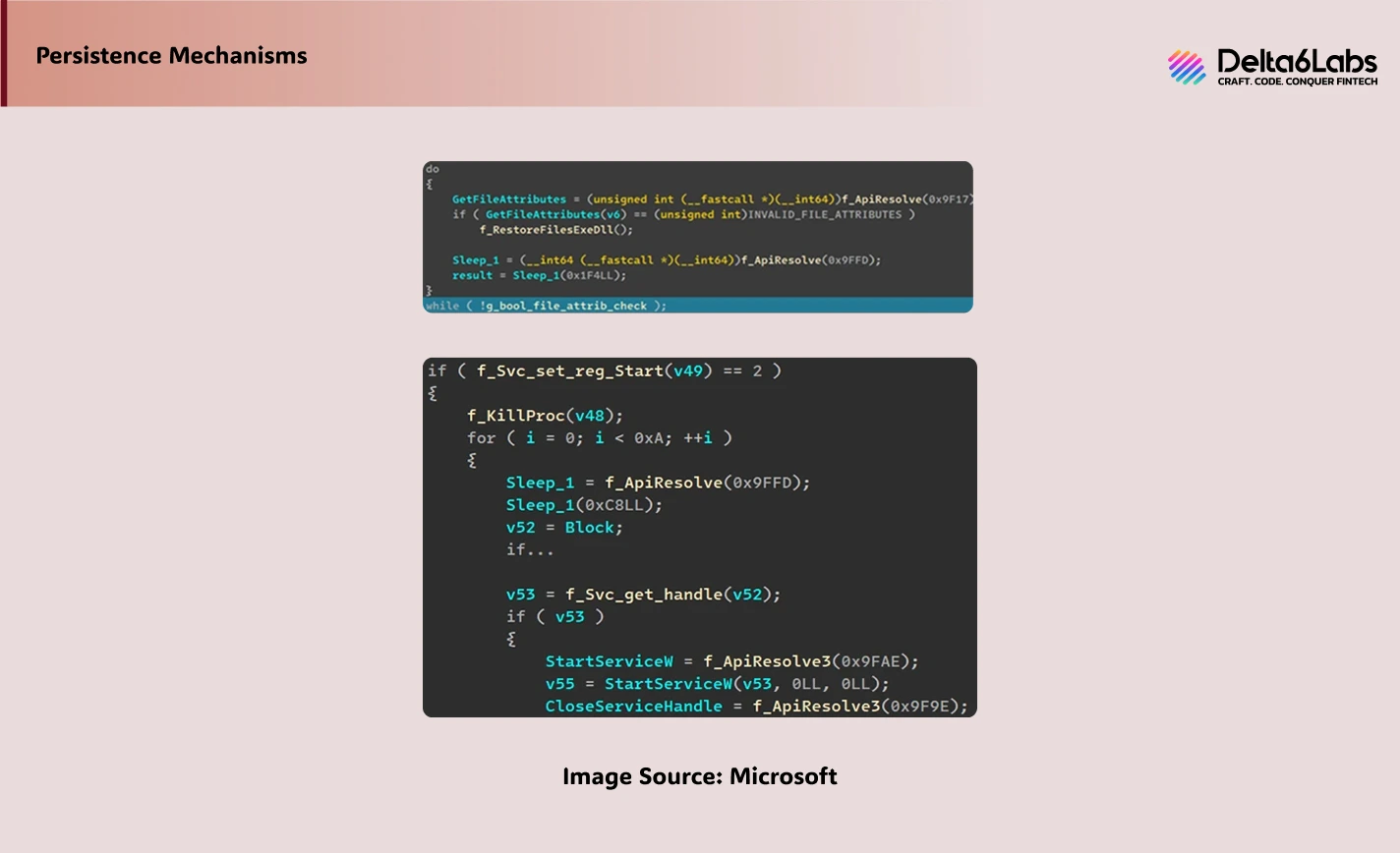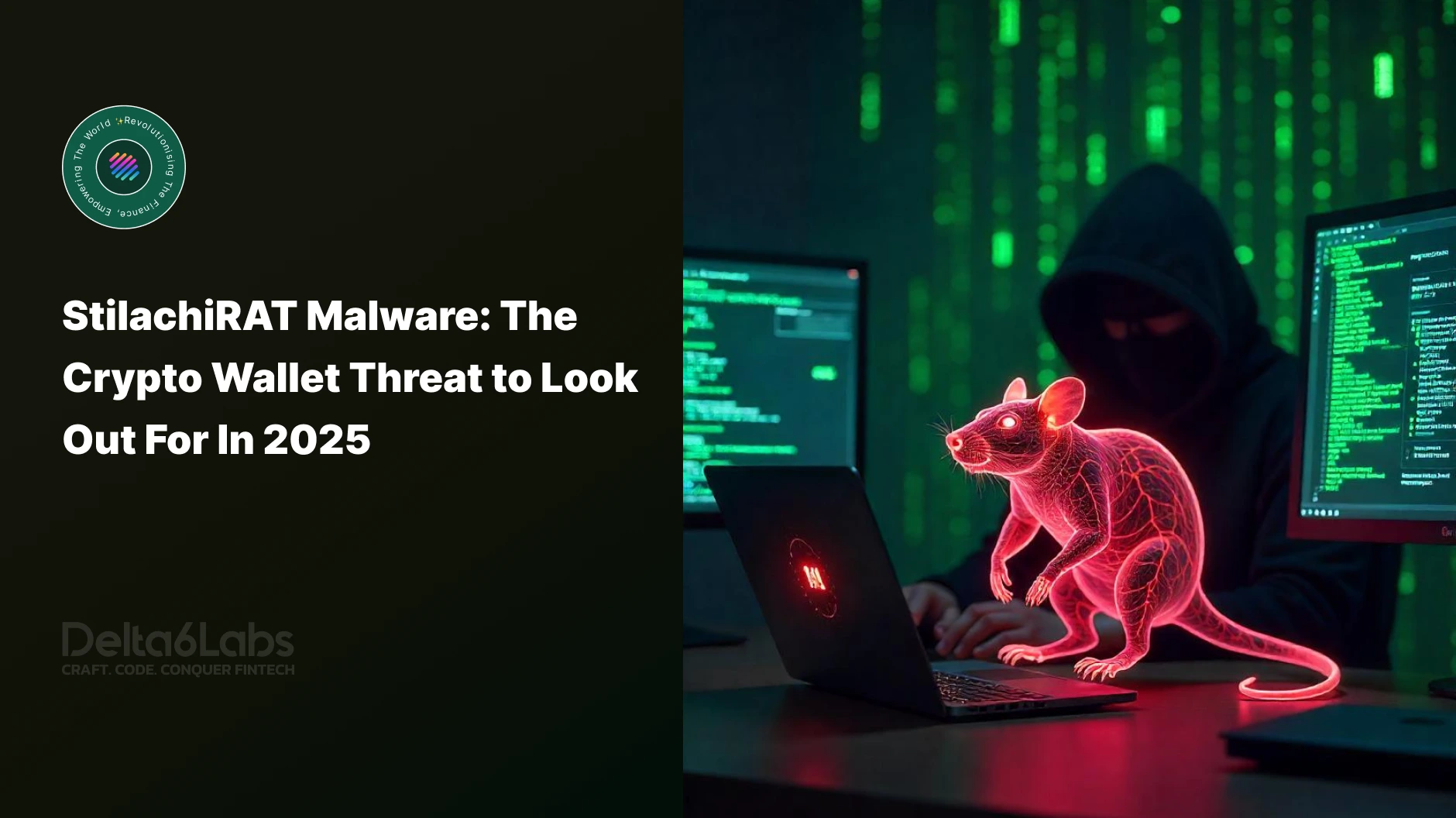StilachiRAT Malware: The Crypto Wallet Threat to Look Out For in 2025
Table of Contents
The crypto industry is an exponentially growing industry. With the rise in its popularity, the threats are also increasing rapidly. Recently, Microsoft discovered a malware known as StilachiRat, designed to steal cryptocurrency wallets, raising serious concerns about the security of crypto assets. In this blog, we will discuss the impact of StilachiRat malware on cryptocurrency assets and how to protect crypto wallets from its threat.
What is StilachiRAT?
StilachaRAT is a malware that provides hackers with complete control over an infected system. It is a type of remote access Trojan that specifically targets crypto wallet extensions in Google Chrome, once installed on a device. This attack poses a serious security threat to cryptocurrency users who store their digital assets in web browser-based wallets. Reports indicate that the StilachiRAT malware’s WWStartuoCtrl64.dll module reveals its RAT capabilities and showcases various techniques for stealing data from the targeted system.
How Does It Work?
The source of StilachiRat malware has not been confirmed yet, nor is it known how RAT is distributed. However, companies have discovered that it can be installed through multiple attack vectors, including Trojanized software, malicious websites, and email.
Once the StilachiRAT is installed in a device, it gathers system data by scanning the system and configuring the data related to crypto wallet Chrome extensions. It extracts the usernames and passwords stored in Chrome and monitors the clipboard content to steal credentials and cryptocurrency keys. It can also reboot the system, change registry entries, and execute applications.
Which Crypto Wallets Are Under Attack?
Microsoft has stated that, according to its research, the StilachiRAT virus prominently attacks 20 popular crypto wallet extensions, including:
- OKX wallet
- MetaMask
- Trust Wallet
- Coinbase Wallet
- BNB Chain Wallet
- Bitget Wallet (BitKeep)
- Braavos-Starknet Wallet
- Manta Wallet
- Phantom
- Plug
- Station wallet
- Trust Wallet
- TronLink
StilachiRAT targets these crypto wallet Chrome extensions, stealing login credentials, private keys, and other sensitive information.
Why is it hard to detect StilachiRAT Malware?
StilachiRAT malware uses the following tactics to remain undetected within a system while stealing valuable information:
- Monitors clipboard content and tracks copied text to steal passwords and seed phrases.
- Erases event logs and traces of its activity to prevent detection.
- Checks the device for analysis tools to prevent detection.
- Display dialogue boxes, accept network connections, and enumerate open windows.
How Does StilachiRAT Enter A System?
There are multiple ways through which StilachiRAT spreads and enters a system using various attack vectors, such as:
Emails
One of the primary ways through which StilachiRAT malware enters a system is through phishing emails. These emails contain attached links that, once clicked, install the Trojan into the system.
Malicious Ads
Multiple prompts for software updates pop up on the screen, which, if clicked, can allow the StilachiRAT malware to enter the system.
Compromised Hardware Devices
Hardware devices such as USB can already contain the StilachiRAT virus, and when they are connected to a system, the virus automatically enters and installs itself.

Ways To Protect Your Crypto Wallets From StilachiRAT Malware
Here are the following ways that can help you protect your crypto wallets from StilachiRAT:
Use Multi-factor Authentication: It can be a highly effective method for preventing the StilachiRAT virus from entering your system. It provides an extra layer of protection for your crypto accounts. Delta6Labs integrates multi-factor authentication into its development process to enhance the security of crypto wallets.
Use Hardware Wallets: Rather than storing your private keys in a software wallet, which is vulnerable to cyberattacks, users can keep their private keys and crypto assets in hardware devices that cannot be accessed over the internet.
Avoid storing private keys in Browsers.: Users should not keep their private keys and log in to their crypto wallets in web browsers.
Don’t click on Suspicious Links: Avoid clicking on suspicious links and ads without verifying them.
Anti-phishing Tools: Use Anti-phishing tools and other advanced antivirus software to provide an extra layer of security to your system.
Conclusion
StilachiRAT is a malicious malware that targets cryptocurrency wallet users by gaining remote access to their systems. It targets popular web browser extensions explicitly, extracting sensitive information such as usernames, passwords, and private keys.
The malware can enter systems through various attack vectors, including phishing emails, malicious ads, and compromised hardware devices. Notably, it employs tactics to evade detection, such as monitoring clipboard contents and erasing event logs.
To protect against StilachiRAT, users are advised to utilize multi-factor authentication, opt for hardware wallets instead of software wallets, and refrain from storing private keys in web browsers. Additionally, avoiding suspicious links and employing anti-phishing tools can enhance security. With the rising popularity of cryptocurrencies, ensuring the safety of digital assets is crucial as threats like StilachiRAT continue to evolve.
Frequently Asked Questions
Disclaimer:
The information on this blog is for knowledge purposes only. The content provided is subject to updates, completion, verification, and amendments, which may result in significant changes.
Nothing in this blog is intended to serve as legal, tax, securities, or investment advice of any investment or a solicitation for any product or service.






